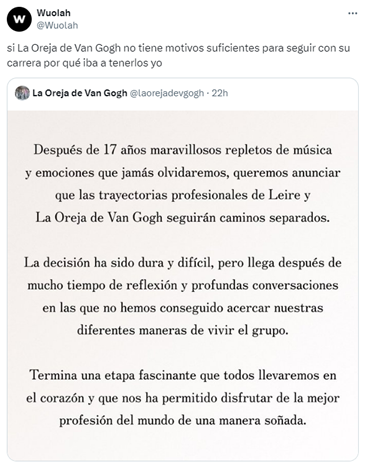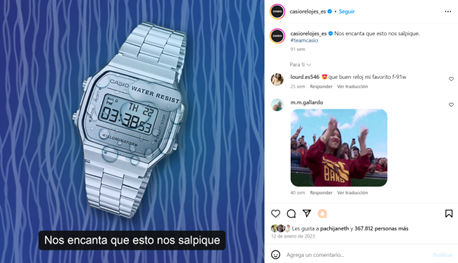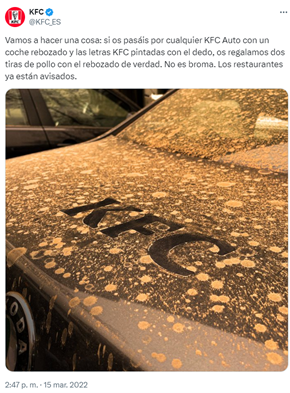Social media has changed the way we communicate and consume content, which has led companies to reinvent themselves and include these platforms in their advertising strategies. Then came online conversations, hashtags, memes and viral topics, and with them came RTM (Real Time Marketing), but what is Real Time Marketing?
It can be said that nowadays it is another marketing and advertising tool, an opportunity to establish a dialogue with our audience and reach new profiles that may feel similar to our content. Brands and agencies already include it as part of their advertising strategy, being aware of the great benefits it can bring. It consists of the creation and promotion of relevant content in real time, taking advantage of events or emerging trends that arise on the network and that reach a certain level of notoriety.
This strategy allows you to connect with your audience in an immediate and meaningful way, showing that the brand in question is close to and understands its target audience.
What can real time marketing be?
One of the main handicaps of this type of strategy is that it is not possible to foresee which way the users’ conversation is going to turn. Any comment, photograph or news item is likely to go viral, which is why one of the main functions of the community manager is to actively listen to the community’ s conversations.
Any event or news item can be relevant to apply a real time marketing strategy, as they can be included:
- Memes and social media trends
- Statements or highlights from the lives of celebrities
- Elements of popular culture
- Sporting events
- Events of national or international significance
What are the keys to implementing a good real time marketing strategy?
As we have explained above, real time marketing cannot be anticipated but it is possible to follow some techniques to achieve a good strategy:
- Constant monitoring: it is essential to be aware of what is happening at all times, both in relevant events, social media trends and conversations. To do this, you can use social listening tools such as Brandwatch or Talkwalkers, which will help you to follow everything that happens in the digital universe.
- Identifying opportunities: once we are clear about how to follow trends, we must have a very deep knowledge of the brand to know which conversations it is appropriate to enter and which are best avoided.
- Planning: although real time is based on immediacy and conversations that arise spontaneously, we can and should plan actions in the medium term, knowing that they will be potential topics to generate conversation: Christmas, Black Friday, sporting events, television programmes, series with a lot of repercussion…
- Authenticity: real time marketing is based on establishing conversations with users, seeking interaction and having a presence by being close to them, so when we want to join a trend we must do it in an original way and not just launch promotional content, this will help us connect with the audience in a more natural way.
- Ability to manoeuvre: speed in responding is essential to keep up with the conversation, so we must be agile when thinking and producing a possible response.
- Crisis management: we must bear in mind that our response may not be the right one, leading to criticism. For this reason, we must have a crisis management plan prepared so that we know how to deal with these situations.
Some examples of successful real time marketing
Another of the great advantages of RTM is that it captures the attention of the public, as real-time actions tend to capture the attention of a larger audience than the brand’s usual audience, thus generating notoriety.
Some examples have been very outstanding:
- Wuolah and La Oreja de Van Gogh: The announcement of Leire’s departure from the group from San Sebastian spread like wildfire and they knew how to spin their product very well with the news.

- Casio and the break-up of Piqué and Shakira: if a song spread like wildfire in 2023, it was the Bizarrap session with Shakira, in which the Colombian recounted her break-up with the footballer Piqué. The song’s lyrics were full of darts, even naming brands, which took advantage of the song’s success to create their own content:

- Sub-Saharan dust and KFC: extreme weather events tend to go viral quickly, so brands need to react as quickly as possible. That’s what KFC did after a cloud of sub-Saharan dust covered Spain in March 2022. The fried chicken chain took the opportunity to try to drive customers to its KFC Auto.

These are just some of the successful examples of this practice, but they clearly demonstrate the need for brands to start activating this type of communication in their strategies if they want to be close to their followers and offer relevant content.




